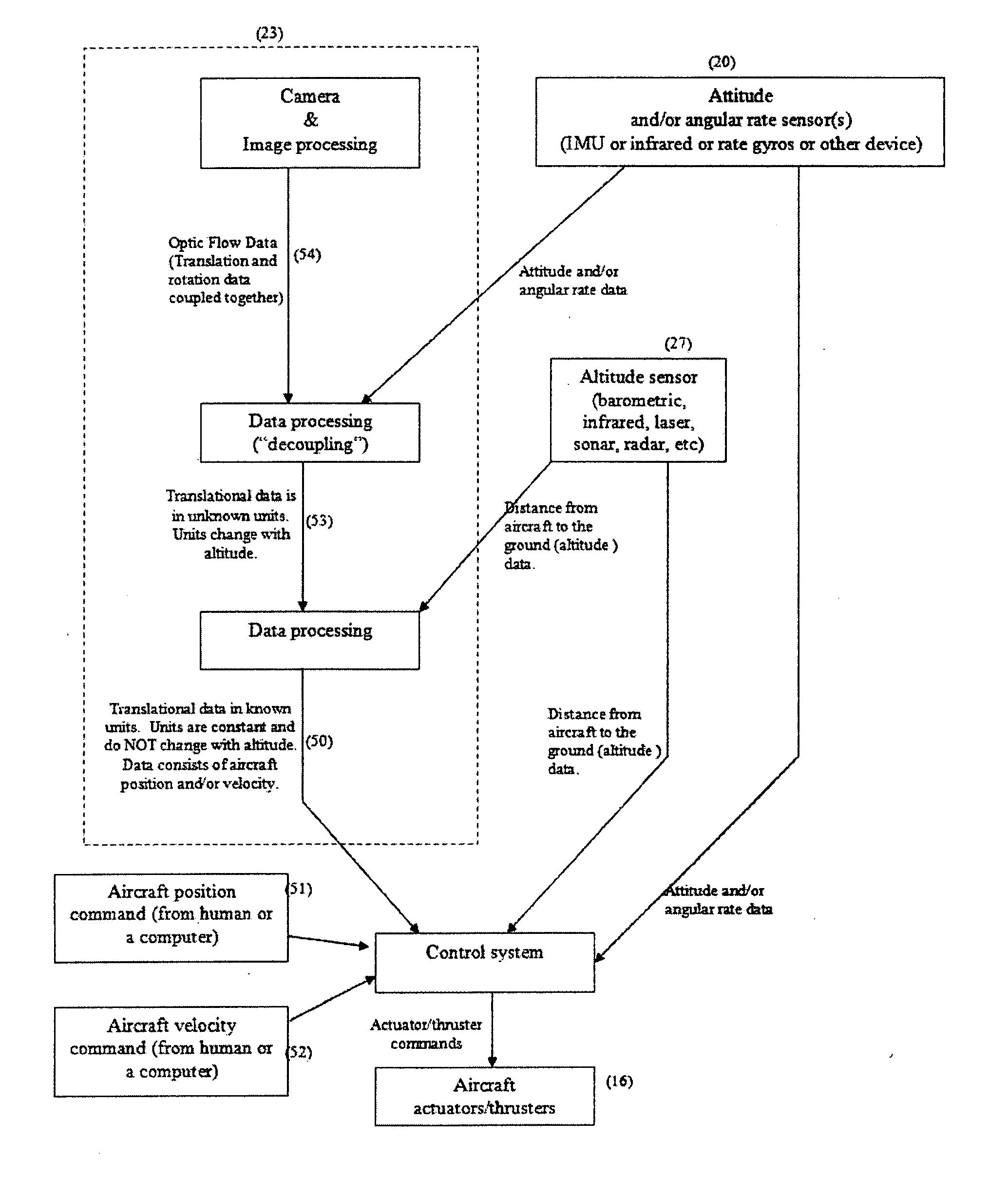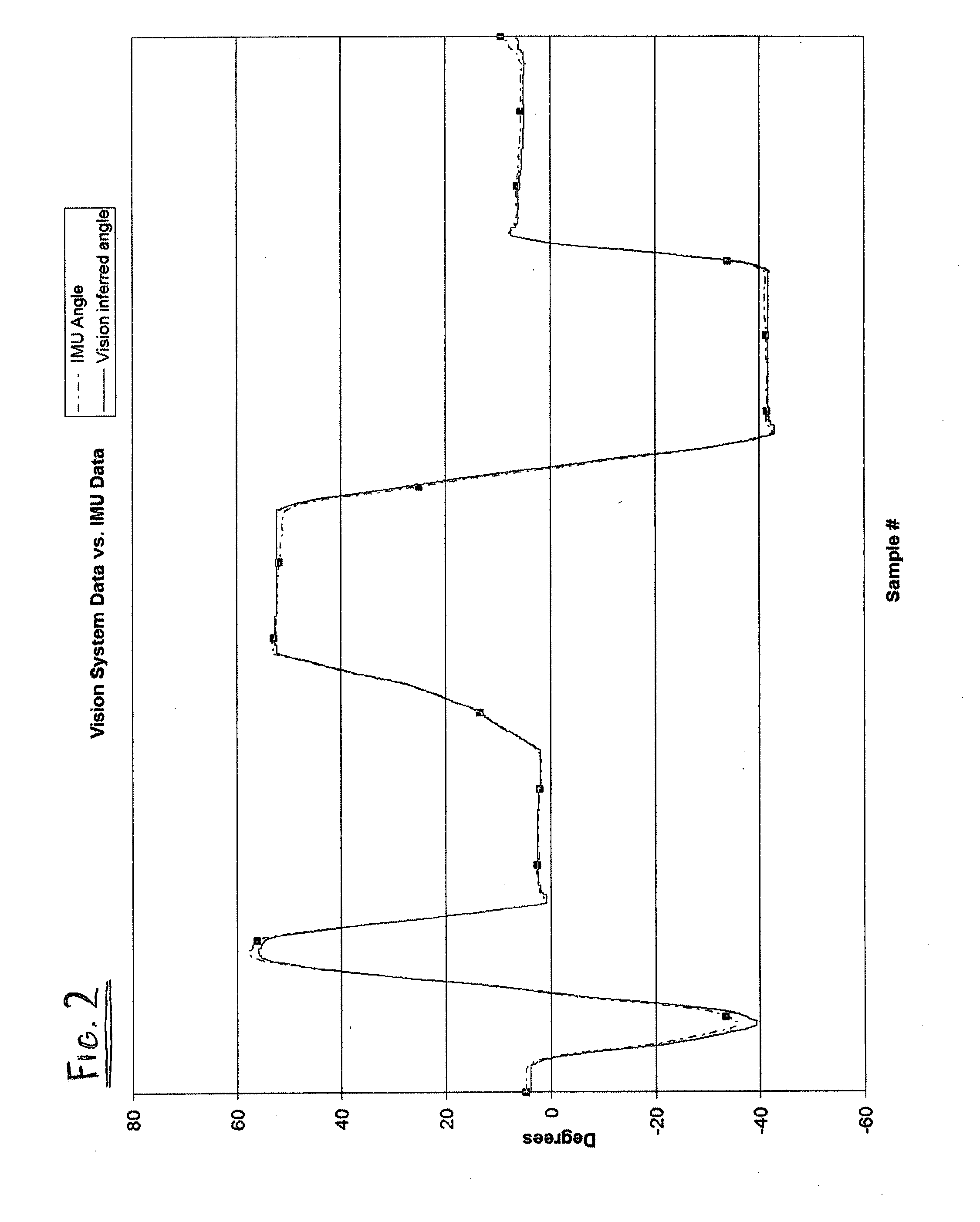System for facilitating control of an aircraft
- Summary
- Abstract
- Description
- Claims
- Application Information
AI Technical Summary
Benefits of technology
Problems solved by technology
Method used
Image
Examples
Embodiment Construction
[0034]The Applicant's system and method for determining the position and velocity of an autonomous aircraft in a low-cost, low-weight manner independent of external technological dependencies mimics many of the inherent abilities of an experienced helicopter pilot. The flight abilities of the human brain can best be shown through an understanding of the processes that occur when an experienced helicopter pilot safely controls the speed, direction, roll, pitch and yaw of a helicopter during landing, even without access to any guiding instrumentation. In a typical instrument-free landing, the pilot would first maintain the aircraft in a relatively level manner by using his sense of equilibrium to know which way is right side up. He may then control the aircraft to maintain a fairly level state. He would also look outside the aircraft to gain an indication of how far away the aircraft is from the ground and to see how much and which direction the aircraft is moving relative to the grou...
PUM
 Login to View More
Login to View More Abstract
Description
Claims
Application Information
 Login to View More
Login to View More - R&D
- Intellectual Property
- Life Sciences
- Materials
- Tech Scout
- Unparalleled Data Quality
- Higher Quality Content
- 60% Fewer Hallucinations
Browse by: Latest US Patents, China's latest patents, Technical Efficacy Thesaurus, Application Domain, Technology Topic, Popular Technical Reports.
© 2025 PatSnap. All rights reserved.Legal|Privacy policy|Modern Slavery Act Transparency Statement|Sitemap|About US| Contact US: help@patsnap.com



